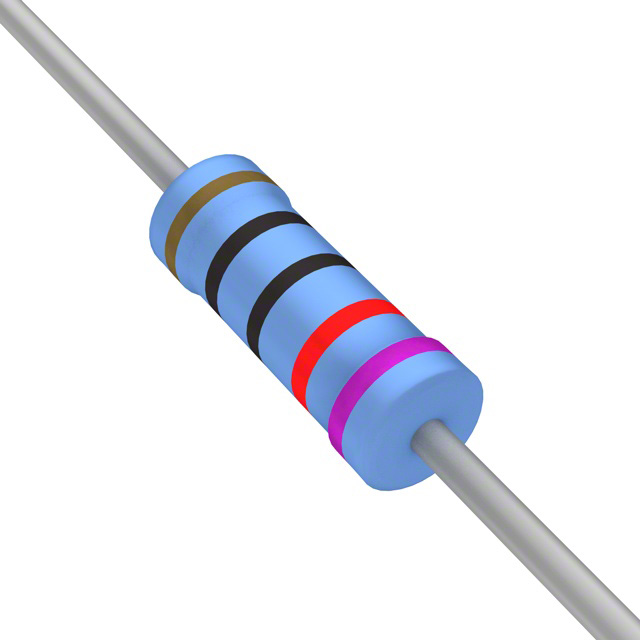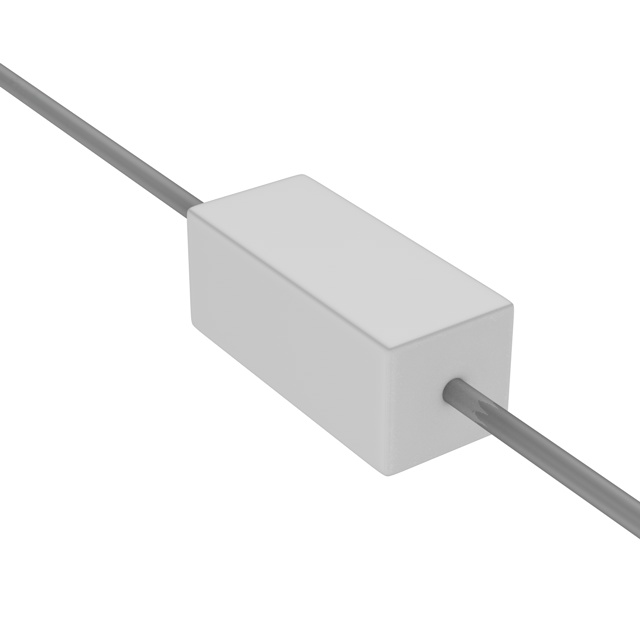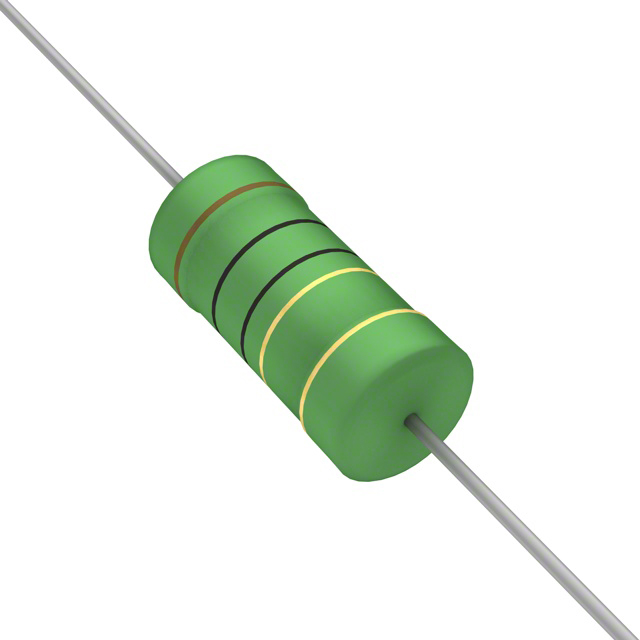

What Ballast Resistor is and How It works
Catalog
Definition of Ballast ResistorWhat does a Ballast Resistor do?Applications of a Ballast ResistorBallast Resistor for Automotive ApplicationsBallast Resistor in Fluorescent LampsBallast Resistor in a LED CircuitTypes of Ballast ResistorsHow to Test a Ballast ResistorAdvantagesDefinition of Ballast Resistor
A ballast resistor is a special type of resistor that helps control the amount of current in a circuit to prevent it from getting too high. The term "electric ballast" can refer to various devices, like resistors, capacitors, or inductors, that help keep a circuit stable by managing current and voltage levels.
Ballast resistors work by changing their resistance depending on the current flowing through them. If the current goes above a certain limit, the resistance increases; if the current drops, the resistance decreases.
This means the ballast resistor tries to keep a steady current flowing in the circuit.
Unlike a load resistor, which has a fixed resistance no matter what, a ballast resistor can adjust itself based on the current in the system.
These types of resistors are not commonly used anymore because modern electronic circuits can do the same job more effectively.
What does a Ballast Resistor do?
The word "ballast" means something that helps keep things stable, and that is exactly what a ballast resistor does in an electrical circuit.
A ballast resistor is placed in a device to help manage changes and protect the other parts of the circuit.
When the current going through the resistor increases, the temperature goes up as well. This rise in temperature causes the resistance to increase too.
So, when the resistance goes up, it helps limit the current flowing through the circuit.
Ballast resistors are often found in cars, where they help start the engine. When you turn on the starter motor, the ballast resistor keeps the battery from losing too much voltage.
They are also used in lighting, like with fluorescent lamps, LED lights, and neon signs.
Applications of a Ballast Resistor
A ballast resistor is important for controlling the current and voltage in an electrical system. It helps prevent equipment from facing issues like too much current or too much voltage.
You will mostly find ballast resistors in cars and lighting systems.
Ballast Resistor for Automotive Applications
In a car engine, a ballast resistor is used in the ignition system, and it is often called an ignition ballast resistor.
Typically, this resistor is placed between the main power source of the ignition coil and the coil itself. Its job is to lower the risk of the ignition coil failing.
When the starter motor is cranking the engine, the ignition ballast resistor reduces the voltage and current going to the coil.
This means that lower current results in less heat, which helps the ignition coil last longer.
However, the ignition system still needs a higher voltage that matches the power source. To make this happen, a jumper wire is connected to the ignition ballast resistor. When starting the engine, this wire provides the extra voltage needed for the ignition coil.
Ballast Resistor in Fluorescent Lamps
Fluorescent lighting is a popular and energy-efficient way to light up a space. However, it has a downside. When a fluorescent lamp is connected directly to a voltage source, it can heat up quickly. This happens because the lamp draws a lot of current right when it is turned on. To prevent overheating from this high current, a ballast resistor is used in the circuit, connected in series with the bulb. The main job of the ballast resistor is to reduce the voltage and control the current.
For the lamp to light up, it needs to create an arc between its two electrodes. This requires a high starting voltage, which is roughly equal to the supply voltage. Once the arc is formed, the ballast resistor supplies the necessary voltage during the start-up and then reduces the voltage while managing the current flow. In the diagram below, you can see how a fluorescent light tube is connected to a ballast resistor and a starting switch.

Ballast Resistor in Fluorescent Lamps
Ballast Resistor in a LED Circuit
An LED, or Light Emitting Diode, is a very delicate device that can get damaged if the supply voltage is too high.
To prevent this, a ballast resistor is added in series with the LED. This resistor helps lower the voltage across the LED to the safe level it needs.
It is important to choose the right value for the ballast resistor. Let’s look at an example.

Ballast Resistor
Imagine you have a single LED connected in series with a power supply that has a higher voltage than what the LED can handle. In this case, you cannot connect it directly without using a resistor.

Where:
VF = Forward voltage of the LED
IF = Forward current of the LED
R = Resistance of the ballast resistor
E = Supply voltage
For example, if the DC source value is 5 volts, the forward voltage of the LED is 3.1 volts, and the forward current is 9 milliamps. Now, using the equation above, you can calculate the resistance needed for the ballast resistor.

Hence, for this example, you would need to connect a resistor with a value of 211 ohms or higher.
Types of Ballast Resistors
Ballast resistors can be classified into two types:
Fixed Ballast Resistor
As the name suggests, the resistance of this type is constant. Fixed ballast resistors are typically used in simple circuits.
These resistors are used in different applications where a high resistance is needed.
For example, you can find them in circuits with neon lamps or LEDs. They are also used in variable-speed fans.
In a variable-speed fan, a fixed ballast resistor with two center taps is used. The fan's selector switch adjusts the resistance using the center tap, and this changes the fan's speed based on the resistance value.
Self-variable Ballast Resistor
This type of resistor can change its resistance when the current changes. When the current flowing through the resistor increases, it raises the temperature of the ballast resistor, which then causes the resistance to increase as well.
You can find this type of ballast resistor in incandescent lamps. As the current through the lamp goes up, the resistance of the ballast resistor also increases, leading to a higher voltage drop across the resistor.
When the current decreases, the temperature drops, and so does the resistance. This kind of resistor is also used to protect circuit equipment from too much current.
How to Test a Ballast Resistor
A ballast resistor is used in cars to lower the voltage going to the ignition coil. To test it, you will need an ohmmeter and a multimeter.
When the ballast resistor is not connected to the ignition coil, the full supply voltage goes to the coil. Typically, the battery for the ignition system will be either 12 volts or 24 volts.
To help the ignition coil last longer, we need to reduce the voltage, which is why we connect a ballast resistor to it.
To test the ballast resistor, you can measure the voltage across the ignition coil. If the ballast resistor is working properly, it should lower the voltage to about 7 to 8 volts. If the voltage is too high, the ballast may be damaged.
You can also check the resistance of the ballast resistor using an ohmmeter. If the resistance is close to its rated value, that is a good sign that the ballast resistor is in good condition.
Advantages
Here are some of the benefits of using a ballast resistor:
- These resistors help control the voltage and current in electrical systems.
- They protect equipment from too much voltage and too much current.
- Ballast resistors reduce fluctuations in current and voltage throughout the rest of the circuit.
- Because of these advantages, ballast resistors are mainly used for protection against over-voltage and overcurrent in various automotive and lighting circuits, helping to keep everything stable.
Subscribe to JMBom Electronics !













